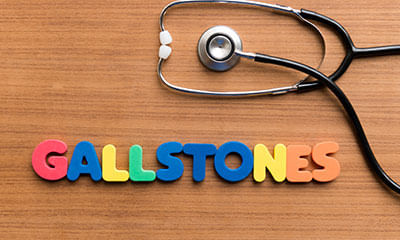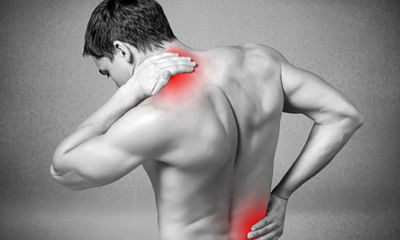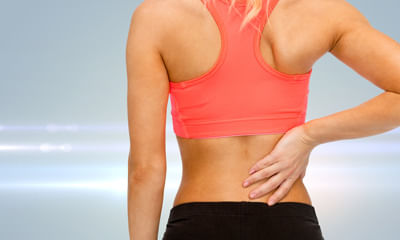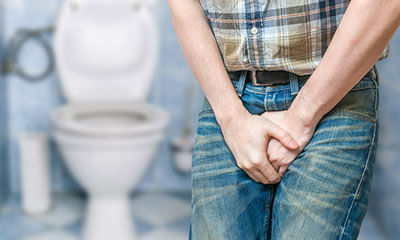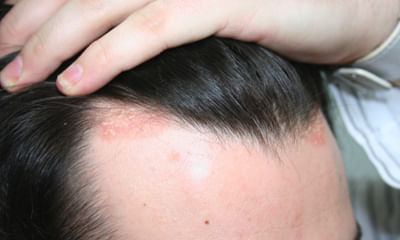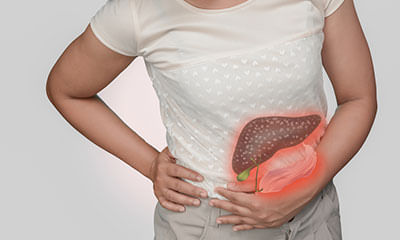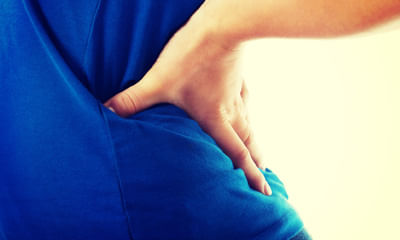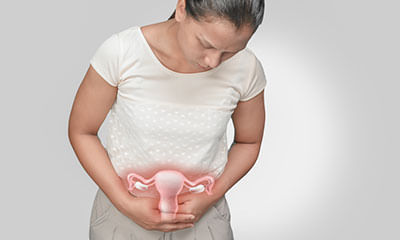How To Increase Stomach Size
Sir I am suffering from hepatitis b which diagnosed 1 year earlier then after scanning it shown hepatitis b liver cirrho ...
Ask Free Question
Hi, from the details provided by you, I understand that you have cirrhosis of liver with chronic hepatitis b infection as the cause. You do not seem to have developed complications of portal hypertension viz. Gi bleed (blood in vomitus or stools), ascites (collection of fluid/water in stomach) or hepatic encephalopathy (drowsiness, transient loss of consciousness) etc. You need to continue with anti-viral medications for hepatitis b and cardivas along with regular screening and follow up with blood tests (every 3 to 6 months), ultrasound of abdomen (every 6 months) and surveillance endoscopies. Liver transplant is usually needed once you start developing complications or liver cancer (hcc) and is decided by your gastroenterologist/ hepatologist based on several parameters and scores (meld score.)
Does sleeping face down for many years during teenage affect the growth of penis. Because my penis size is 4 inches when ...
Ask Free Question
Sleeping face down for many years do not affect penis size. Your penis is 4 inches when erected. Your penis is small in size. I guarantee you quick,fast, natural, safe and permanent treatment. You need to take 30 days treatment to make strong your pelvic floor muscles and make semen thick in consistency. You have to follow certain instructions which includes dietry additions of 3 to 4 things,exercise of 15 minutes daily, meditation and avoidance of certain things, for permanent solution to size problem of penis. I give you 100% guarantee for increase in penis size by around 2 inches and more thickness and more sex confidence throughout life. If interested, I advise you to tell me your eating habits and any addiction to alcohol or cigarette ,for better guidance and natural, safe and permanent treatment, by calling me through lybrate.
My husband has a history of uric acid (above 6), vid d deficiency also. He also has varicose veins. He is experiencing e ...
Ask Free Question
It is reversible 100 % with diet please contact mobile in what's app if you have gout, a form of arthritis characterized by the accumulation of uric acid crystals in the joints, it's important to follow a diet that helps manage your condition. The following are some dietary recommendations for individuals with gout, based on an indian diet: 1. Limit purine-rich foods: purines are compounds that break down into uric acid in the body. Foods high in purines can increase uric acid levels and trigger gout attacks. Limit or avoid purine-rich foods such as organ meats (liver, kidneys), red meat (beef, lamb), seafood (anchovies, sardines, shellfish), and certain legumes (lentils, chickpeas). 2. Increase low-fat dairy intake: low-fat dairy products, such as milk, yogurt, and cheese, have been associated with a lower risk of gout. They contain proteins that may help lower uric acid levels. Choose low-fat or skim varieties, and aim for 2-3 servings per day. 3. Consume plenty of fruits and vegetables: fruits and vegetables are generally low in purines and high in fiber and antioxidants, which can be beneficial for managing gout. Include a variety of colorful fruits and vegetables in your diet, such as berries, cherries, citrus fruits, leafy greens, tomatoes, and bell peppers. 4. Emphasize whole grains: whole grains like brown rice, whole wheat, oats, and quinoa are healthy carbohydrate sources that provide fiber and nutrients. They can be included in meals to replace refined grains. 5. Stay hydrated: drinking an adequate amount of water helps in flushing out uric acid from the body. Aim for at least 8-10 glasses of water per day, and include hydrating fluids like coconut water, herbal teas, and low-sugar fruit juices. 6. Limit alcohol and sugary beverages: alcohol, especially beer, can raise uric acid levels and trigger gout attacks. It's best to limit or avoid alcohol consumption. Additionally, sugary beverages like soft drinks and sweetened fruit juices should be minimized, as they may contribute to weight gain and worsen gout symptoms. 7. Moderate your intake of protein: while high-purine protein sources should be avoided, it's still important to consume moderate amounts of protein for overall health. Include lean sources of protein like skinless poultry, eggs, low-fat dairy, and plant-based proteins like legumes and tofu. 8. Control portion sizes and maintain a healthy weight: excess weight can increase the risk and severity of gout attacks. Watch your portion sizes, avoid overeating, and focus on achieving and maintaining a healthy weight through a balanced diet and regular physical activity. Remember, it's always a good idea to consult with a healthcare professional or registered dietitian who can provide personalized dietary advice and guidance based on your specific needs and medical condition. Dr. hariharan dhamodharan m.s.ortho d.n.b.ortho.
I have joint pain in my right side neck and shoulders suddenly. Please let me know this may be a cause of gastric. ...
Ask Free Question
It can be gastric or cervical problem since when r you having this? What r other symptoms that you r experiencing? By doing what like walking, exertion, eating or empty stomach- it increases or decreases in intensity. For how much time it remains? Is there stiffness also? How is your appetite? R you constipated or having loose stools? Any problem in urine? I need details of the case.in the meanwhile follow this 1. Take your breakfast every day. Don't skip it. U should eat whatever your mother or grandparent eat in bfast. I mean to say whatever is your traditional food. If punjabi eat paratha, if belongs to south then take idli/ dosa etc. 2. Don't overeat 3. Don't take tea empty stomach. Eat something like a banana (if you are not diabetic) or any seasonal fruit or soaked almonds and a glass of plain water first thing in the morning (preferably within 10 mins of waking up). No only biscuits or rusk will not do. 4. Have light meals every 2 hours (in addition to your breakfast, lunch n dinner) e.g. Nariyal paani, chaach, a handful of mixed dry fruits, a handful of peanuts, any fresh n seasonal fruit (eat whole fruit not juice), a cup of curd/milk etc 5. Take simple food like rice n dal in dinner. Finish your dinner at least 2 hours before going to sleep. 6. Maintain active life style 7. Avoid fast foods, spicy n fried foods, carbonated beverages 8. Take a lot of green vegetables n fruit. 9. Drink lot of water. 10. Everyday preferably sleep on same time 11. Take 1tsp of ghee in bfast, lunch n dinner. Exercise in the form of yoga, cycling, swimming, gym etc.
I am 25 year old female, I have side, back, joints and muscle pains and have checked my kidney function ,is function wel ...
Ask Free Question
What is your age? Since when r you having this? What r other symptoms that you r experiencing? By doing what like walking, exertion, eating or empty stomach- it increases or decreases in intensity. For how much time it remains? Is there stiffness also? How is your appetite? R you constipated or having loose stools? Any problem in urine? I need details of the case.in the meanwhile do test your hb, blood sugar, thyroid function test, vit d, calcium. Follow this 1. Take your breakfast every day. Don't skip it. U should eat whatever your mother or grandparent eat in bfast. I mean to say whatever is your traditional food. If punjabi eat paratha, if belongs to south then take idli/ dosa etc. 2. Don't overeat 3. Don't take tea empty stomach. Eat something like a banana (if you are not diabetic) or any seasonal fruit or soaked almonds and a glass of plain water first thing in the morning (preferably within 10 mins of waking up). No only biscuits or rusk will not do. 4. Have light meals every 2 hours (in addition to your breakfast, lunch n dinner) e.g. Nariyal paani, chaach, a handful of mixed dry fruits, a handful of peanuts, any fresh n seasonal fruit (eat whole fruit not juice), a cup of curd/milk etc 5. Take simple food like rice n dal in dinner. Finish your dinner at least 2 hours before going to sleep. 6. Maintain active life style 7. Avoid fast foods, spicy n fried foods, carbonated beverages 8. Take a lot of green vegetables n fruit. 9. Drink lot of water. 10. Everyday preferably sleep on same time 11. Take 1tsp of ghee in bfast, lunch n dinner. Exercise in the form of yoga, cycling, swimming, gym etc.
Hi, dear doc, I had acute pain on right side of lower abdomen at night I have been taken to the hospital in emergency, d ...
Ask Free Question
There is no treatment required for hemangiomas. We can simply ignore it. They r to be treated only if they gradually increase in size or start to cause symptoms that can be explained by them.
I'm 52 years old male. I'm detected psoriasis 22 years ago. Initially I was having a scaly patches periodically. Subsequ ...
Ask Free Question
Physiotherapy and exercise - psoriatic arthritis therapeutic exercises therapeutic exercises are activities based on your exact needs. They are designed to reach a certain goal, eg to increase muscle strength. There are two types used for arthritis: range of motion and strengthening. Range of motion exercises help to maintain joint movement, relieve stiffness and restore flexibility. To increase or maintain range and flexibility you need to take your joints and muscles to their limits. Range of movement exercises should be carried out daily. Strengthening exercises help maintain or increase muscle strength. To strengthen a muscle you need to apply resistance to the movement. This can be done using your own body weight, weights or resistance bands. Strengthening exercises should be performed on alternate days and not when a joint is hot (feels warm when touched) and painful unless you are supervised by a physiotherapist. The following exercises are just some examples to get you started. A health professional can design a programme for your specific needs. Fingers and hands 1. Forearm supported on a table, hand relaxed over the edge. Extend the wrist and clench your fist - relax and let your hand relax. Repeat ten times. 2. Clasp your hands together and support your forearms on a table with your hands over the edge. Bend your wrist up and down. Repeat five times. 3. Forearm on a table, elbow tucked in to your side and palm turned down. Alternately, turn your palm to face up, then down, keeping elbow still. Repeat ten times. 4. Elbow on table with hand up. Straighten your fingers out then bend them to touch your fingertips to the base of your fingers. Repeat ten times. 5. Palm on table. Lift each finger individually off the table. Repeat five times. 6. Elbow on table with hand up. Bring the tip of the thumb to the tip of the little finger, repeat to other fingers in sequence. Repeat five times. Neck and back for the first three exercises sit up straight in a supportive chair, ie one with back support. 1. Tilt your head towards one shoulder until you feel the stretch on the opposite side. Hold for approximately five seconds. Repeat to the other side. 2. Turn your head to one side until you feel the stretch. Hold for approximately five seconds. Repeat to the other side. Repeat five times to each side. 3. Pull your chin in, keeping your neck and back straight (not tipping your head forwards). Hold at the end position and feel the stretch in your neck. Repeat five times. 4. Lie on your back with your hands on your stomach, legs bent at the knee, feet flat on the bed or floor. Tighten your stomach muscles to flatten your lower back against the bed. Hold for five seconds, repeat ten times. 5. Lie on your back as with the previous exercise. Keeping your shoulders down flat, slowly roll your knees from side to side. Hold for five seconds, repeat ten times. 6. Lie on your back as before. Push down through your heels to lift your bottom and lower back off the bed. Hold for five seconds, repeat ten times. Feet and toes 1. Press your toes down and shorten your foot by pulling up the arch on the inside of the foot. Repeat on the other foot. 2. Lie with your legs out straight and pull your feet up, then push your feet down. Repeat ten times. 3. Wiggle your toes. Repeat ten times. 4. Circle your feet around one way, then the other way. Repeat ten times. Hips and knees 1. Lie face down with both legs outstretched for five minutes. Then gently bend each knee to its limit, then relax with your legs straight. Repeat five times with a 30-second break. 2. Sit with your legs outstretched on a firm bed. Press each knee down onto the bed to straighten it. Hold for five seconds. Relax. Repeat five times. 3. Lie on your back with your knees bent up and feet flat on bed. Bend each knee in turn up to meet your stomach, straighten and lower to the bed. Repeat five times. Jaw gently open the mouth to its full width. Stretch a little and hold for five seconds. Then close your mouth completely. Repeat five times. Recreational exercise this type of exercise includes any form of movement or relaxation that refreshes the body and mind. Recreational exercises or activities improve your fitness and help maintain or improve joint range of motion and muscle strength. They add to a therapeutic programme but do not replace it. •swimming is a good all-round exercise that does not stress your joints. Psoriasis is not generally affected by the chlorine in swimming pool water, but if you find it becomes itchy when dry, apply some barrier cream before you swim and after your shower at the end. •walking is another good way of exercising. If your arthritis affects your feet make sure you wear a wellfitting pair of shoes, and insoles if they have been prescribed for you. •cycling can be an alternative to walking and is often more comfortable on the feet. •activities such as yoga, pilates and other complementary therapies may be beneficial for people with arthritis. Contact your local council offices or community centres for further information and details of classes or events.
I am 22 years old and have enlarged liver 17.5 cm with increased echotexture. Is it something to really worry about oe c ...
Ask Free Question
Liver is main organ which digest the food. If liver is in proper size then digestion of food is proper and body is healthy. Bt if as your report shows enlarge that means liver is swelling. If any thing you eat which are heavy then liver has more work to do and liver become more enlarge. Right now not much serious bt if same type of condition occure for few month then it convert into fatty liver and then it is not treatable. So you have to take medicine so that liver size become normal and proper digestion occur. Almost upto 160 mm is maintain to normal by liver itself bt after that only medicine will help to reduce the size.
Which homeopathy medicine can be taken for lower back pain, shoulder pain and for heel spur please suggest with the dose ...
Ask Free Question
We cannot give suggestions about homeopathy medicine as we are physiotherapists. I have given the following suggestions and protocols for your other pain in the back, heel and shoulder. Please follow it up and let us know if you have further questions or issues. Back pain can affect people of any age, for different reasonsas people get older, the chance of developing lower back pain increases, due to factors such as previous occupation and degenerative disk disease. Lower back pain may be linked to the bony lumbar spine, discs between the vertebrae, ligaments around the spine and discs, spinal cord and nerves, lower back muscles, abdominal and pelvic internal organs, and the skin around the lumbar area. •acute pain starts suddenly and lasts for up to 6 weeks. •chronic or long-term pain develops over a longer period, lasts for over 3 months, and causes ongoing problems. Home advise: •resting from strenuous activity can help, but moving around will ease stiffness, reduce pain, and prevent muscles from weakening. •applying heat, ice, ultrasound, and electrical stimulation — as well as some muscle-release techniques to the back muscles and soft tissues — may help alleviate pain. •as the pain improves, the physical therapist may introduce some flexibility and strength exercises for the back and abdominal muscles. Techniques for improving posture may also help. •the patient will be encouraged to practice the techniques regularly, even after the pain has gone, to prevent back pain recurrence. Regular exercise helps build strength and control body weight. Guided, low-impact aerobic activities can boost heart health without straining or jerking the back. Before starting any exercise program, talk to a health care professional. There are two main types of exercise that people can do to reduce the risk of back pain: •core-strengthening exercises work the abdominal and back muscles, helping to strengthen muscles that protect the back. •flexibility training aims at improving core flexibility, including the spine, hips, and upper legs. We suggest you to wear lumbosacral corset (belt) which is available at our clinic. If you want you can buy from us, if you are far away from chennai we can send you by courier. The reason why we are conveying you to buy from us is we can demonstrate over the videocall (using whatsapp) and also we can monitor you throughout when to wear it and how long to wear it. And also if you find any difficulty wearing the brace you can also revert back to us for few more suggestions and we can propose you good solution how to go about it. Uses of lumbosacral corset (belt) a lumbosacral corset adds pressure to the intra-abdominal area. This adds stability to the spine. It is prescribed to people suffering from moderate to severe pain. Other benefits of using a lumbar spine belt are: 1.helps in a certain degree of immobilization of facet joints. 2.reduces pain to allow continuation of normal activities. 3.speeds up the healing process. 4.the pressure exerted by a lumbar spine belt helps in stretching the erector spine muscles. 5.this belt can also be used to support the lower back while exercising. Helps prevent rolling provides stability to lumbar and sacral regions of the back can be used when performing actions like lifting and handling heavy items can also be used when playing sports restricts back movement to aid treatment of back problems do’s and don’ts sitting do: • sit as little as possible and then only for short periods. • place a supportive towel roll at the belt line of the back especially when sitting in a car. • when getting up from sitting, keep the normal curves in your back. Move to the front of the seat and stand up by straightening your legs. Avoid bending forward at the waist. • try to keep the normal curves in your back at all times. Don’t: • do not sit on a low soft couch with a deep seat. It will force you to sit with your hips lower than your knees and will round your back. You will loose the normal curve in your back. • do not place your legs straight out in front of you while sitting (e.g. Sitting in the bath tub). Standing do: • if you must stand for a long period of time, keep one leg up on a foot stool. • adapt work heights. Don’t: • avoid half bent positions. Lifting avoid lifting if you can. Do: • use the correct lifting technique. Keep your back straight when lifting. Never stoop or bend forward. Stand close to the load, have a firm footing and wide stance. Kneel on one knee, keeping the back straight. Have a secure grip on the load and lift by straightening your knees. Do a steady lift. Shift your feet to turn and do not twist your back. Don’t: • do not jerk when you lift. • do not bend over the object you are lifting. Lying do: • sleep on a good firm surface. • if your bed sags, use slats or plywood supports between the mattress and base to firm it. You also can place the mattress on the floor, a simple but temporary solution. • you may be more comfortable at night when you use a pillow for support. Don’t: • do not sleep on your stomach unless advised to do so by your doctor or physical therapist. Bending forward do: • keep the natural curves of your back when doing these and other activities: making a bed, vacuuming, sweeping or mopping the floor, weeding the garden or raking leaves. Coughing and sneezing do: • bend backwards to increase the curve of your back while you cough or sneeze. Driving a car do: • drive the car as little as possible. It is better to be a passenger than to drive yourself. • move the seat forward to the steering wheel. Your seat must be close enough to the wheel to keep the natural curves of your back. If your hips are lower than your knees in this position, raise yourself by sitting on a pillow. Ice. Use an ice pack or cold compress on your foot for 10 to 15 minutes at a time. This is especially beneficial at the end of a long day or when you’ve spent a lot of time on your feet. Or, roll a frozen water bottle under your foot. This method incorporates a bit of massage, relieving tightness in the bottom of your foot. Massage. Massaging the arch of your foot helps to relieve pain and promote mobility. Use your fingers and knuckles to deeply massage your foot for 1 to 5 minutes at a time. One technique is to place both thumbs at the center line of your arch and move them to the outer edges of your feet. Inserts. Use cushion inserts in your shoes for additional support and cushioning. Inexpensive options can be purchased off the shelf. Wear supportive shoes with thicker soles and extra cushioning for additional support that can help to reduce tension in the plantar fascia. Kinesiology tape can be used to improve arch and heel support. Night splints. Many people find quick and effective results by using night splints. They can be worn while sleeping to stretch the plantar fascia. They help to keep the plantar fascia relaxed and prevent you from pointing your feet down. Exercisefoot flexuse your hand to pull your toes back toward your shin. Hold this position for about 30 seconds.Do each side two to three times.Toe towel grab place a small towel under your foot. Curl your toes to grip the towel. Raise the front of your foot off the floor. Hold this position for a few seconds. Release the towel as you lift up your toes and spread them as far apart as possible. Heel and calf stretch to do this stretch: 1.Stand facing a wall. 2.Place your hands on the wall and move one foot back as far as you can comfortably. Toes on both feet should be facing forward, heels flat, with a slight bend in your knees. 3.Lean into the stretch and hold for 30 seconds. You should feel the stretch in your back leg. 4.Change legs and repeat. 5.Do this stretch twice for both legs. Golf ball roll roll a golf baell under your right foot. Continue for up to 1 minute. Do each foot two to three times. Prevention: maintain a healthy weight. Choose supportive shoes. Don't wear worn-out shoes. Apply ice. Do’s and don’ts for shoulder pain do’s do the prescribed exercise regularly to maintain strength, flexibility and range of motion. Do keep the affected arm supported. Use an ice pack for pain relief. Apply the ice pack 3-4 times a day for 10 minutes. Don’ts don't sleep on the affected side. Don't lift heavyweight with the affected arm. Don't jerk your shoulder to avoid stress. Don't use the arm to push yourself up in bed or from a chair. Don't participate in contact sports or do any repetitive heavy lifting. We suggest you to wear shoulder support brace which is available in two different sizes which makes the patient to feel comfortable as it maintains the shoulder in anatomical position and the short lever is maintained. The reason to maintain the short lever in the shoulder joint is it helps the shoulder to prevent the movements which itself is the key to have better progression of healing in the shoulder region. This is suggested for the following conditions. This shoulder support brace what we are suggesting for you is available at our clinic. If you want you can buy from us, if you are far away from chennai we can send you by courier. The reason why we are conveying you to buy from us is we can demonstrate over the videocall (using whatsapp) and also we can monitor you throughout when to wear it and how long to wear it. And also if you find any difficulty wearing the brace you can also revert back to us for few more suggestions and we can propose you good solution how to go about it.
I have sudden pain in my right ovary sometimes it's not sharp. I recently got my check and my ultrasound report is left ...
Ask Free Question
Since when r you having this?What r other symptoms that you r experiencing? By doing what like walking, exertion, eating or empty stomach- it increases or decreases in intensity. For how much time it remains?How is your appetite?R you constipated or having loose stools? Is there stiffness also? Any problem in urine? I nee details to find out cause of pain. According to your ovary volume, it can be pcos. But you have not mentioned your symptoms. Pcod/pcos is a common hormonal disorder in women which can lead to weight gain and irregular periods. While most women depend on pills to deal with it, these simple changes in your lifestyle will help you deal with the condition in a better way. 1.Nutritional approach: deficiency of micronutrients contributes to insulin insensitivity and compromise ovarian function. So, 1. Don't take tea empty stomach. Eat something like a banana (if you are not diabetic) or any seasonal fruit or soaked almonds and a glass of plain water first thing in the morning (preferably within 10 mins of waking up). No only biscuits or rusk will not do. 2. Don't overeat 3. Take your breakfast every day. Don't skip it. U should eat whatever your mother or grandparent eat in bfast. I mean to say whatever is your traditional food. If punjabi eat paratha, if belongs to south then take idli/ dosa etc. 4. Have light meals every 2 hours (in addition to your breakfast, lunch n dinner) e.g. Nariyal paani, chaach, a handful of dry fruits, a handful of peanuts, seasonal fruit (eat whole fruit not juice), a cup of curd/milk etc 5. Finish your dinner at least 2 hours before going to sleep. Take simple food like rice n dal in dinner. 6. Avoid fast foods n fried foods7. Take a lot of green vegetables n fruit. 8. Drink lot of water9. Everyday preferably sleep on same time10. Maintain active life style2. Exercise strategies: regular workouts are non-negotiable. They are essential to burn off fat stores for hormonal balance and regular ovulation. You should join a gym for weight training. Do it 2-3 times a week with at least 48 hours in between 2 sessions. Other days you can do cardio exercises like yoga, cycling, swimming etc. 3. Sleep: adequate sleep is non-negotiable too. Sleeping at a more or less fixed time every day and for an adequate number of hours is a prerequisite to keep hormones in sync. 4. De-stress yourself: love yourself more than anyone else, prioritize your health, learn to say no, take time out to exercise and relax. Pursue your favorite activities, learn a new skill, and never ignore your body signals. For more details you can consult me.

